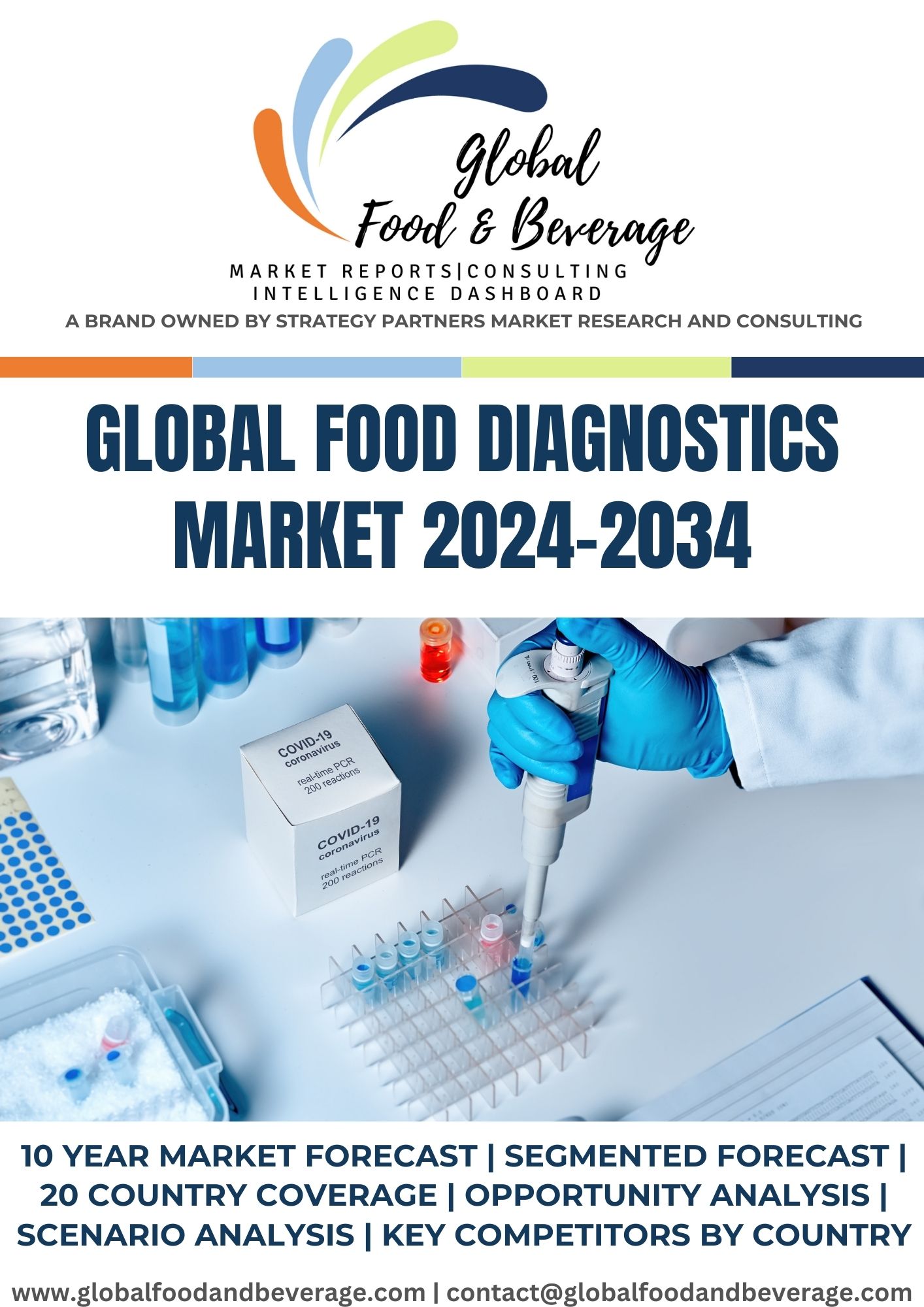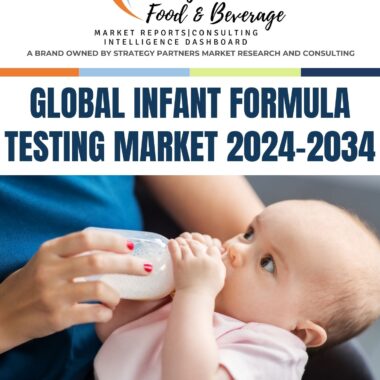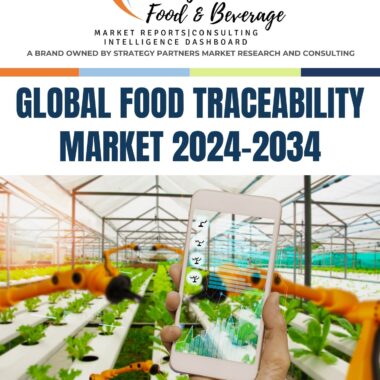Description
Food diagnostics are tests that are used to detect and analyze food contaminants. Food contaminants can be biological, chemical, or physical. Biological contaminants include bacteria, viruses, and parasites. Chemical contaminants include pesticides, herbicides, and heavy metals. Physical contaminants include glass, plastic, and metal.
Food diagnostics are used for a variety of purposes, including:
To ensure the safety of food products
To identify the source of foodborne illness outbreaks
To monitor the quality of food products
To detect food fraud
To support research and development of new food products
Key trends driving the growth of the global food diagnostics market:
Increasing demand for food diagnostics from the food and beverage industry: The food and beverage industry is the largest consumer of food diagnostics. Food diagnostics are used to ensure the safety and quality of food products. The growing demand for processed food and beverage products is driving the demand for food diagnostics.
Growing awareness of the importance of food safety: The growing awareness of the importance of food safety is driving the demand for food diagnostics. Foodborne illness outbreaks can have a significant impact on public health and the economy. Food diagnostics can help to prevent foodborne illness outbreaks by detecting food contaminants early on.
Rising disposable incomes in developing countries: The rising disposable incomes in developing countries are leading to increased demand for food diagnostics. Consumers in developing countries are increasingly demanding high-quality and nutritious food products. Consumers in developing countries are also increasingly demanding personal care products and pharmaceuticals that are made with natural ingredients. The rising disposable incomes in developing countries are driving the demand for food diagnostics.
Key product segments in the global food diagnostics market:
Microbiological food diagnostics: Microbiological food diagnostics are the largest product segment in the global food diagnostics market. Microbiological food diagnostics are used to detect and analyze microbiological contaminants in food products. Microbiological food diagnostics include tests for bacteria, viruses, and parasites.
Chemical food diagnostics: Chemical food diagnostics are the second largest product segment in the global food diagnostics market. Chemical food diagnostics are used to detect and analyze chemical contaminants in food products. Chemical food diagnostics include tests for pesticides, herbicides, and heavy metals.
Physical food diagnostics: Physical food diagnostics are the third largest product segment in the global food diagnostics market. Physical food diagnostics are used to detect and analyze physical contaminants in food products. Physical food diagnostics include tests for glass, plastic, and metal.
Key distribution channels in the global food diagnostics market:
Direct sales: Direct sales are the largest distribution channel for food diagnostics. Direct sales involve manufacturers selling food diagnostics directly to food and beverage companies, testing laboratories, and other industrial users.
Distributors: Distributors are another important distribution channel for food diagnostics. Distributors purchase food diagnostics from manufacturers and sell it to food and beverage companies, testing laboratories, and other industrial users.
Online retailers: Online retailers are also becoming an important distribution channel for food diagnostics. Online retailers sell food diagnostics to food and beverage companies, testing laboratories, other industrial users, and directly to consumers.
Key challenges facing the global food diagnostics market:
Regulatory challenges: The regulation of food diagnostics varies from country to country. This can make it difficult for food diagnostics manufacturers to market their products globally.
Cost of food diagnostics: The cost of food diagnostics can be high. This can make it difficult for small and medium-sized businesses to afford food diagnostics.
Lack of awareness of food diagnostics: Some consumers are not aware of food diagnostics or the benefits they offer. This can make it difficult for food diagnostics manufacturers to market their products to consumers.
Additional thoughts on the global food diagnostics market:
The market for organic and natural food diagnostics is growing rapidly. This is due to the increasing demand for organic and natural food products.
The market for food diagnostics in developing countries is expected to grow significantly in the coming years. This is due to the rising disposable incomes and the growing awareness of the importance of food safety in developing countries.
Food diagnostics manufacturers are focusing on developing new and innovative products to meet the changing needs of the market. For example, some food diagnostics manufacturers are developing food diagnostics that are more affordable, faster, and more accurate.
Overall, the global food diagnostics market is expected to continue to grow in the coming years. This is due to the increasing demand for food diagnostics from the food and beverage industry, the growing awareness of the importance of food safety, and the rising disposable incomes in developing countries
Table of Content
1 Market Introduction- Global Food Diagnostics Market
1.1 Market Segmentation- Global Food Diagnostics Market
1.2 Key Trends- Global Food Diagnostics Market
1.2.1 Drivers
1.2.2 Restraints
1.2.3 Challenges
2 Global Market Forecast- Global Food Diagnostics Market
2.1.1 By Region
2.1.2 By Type
2.1.3 By Type of Test
2.1.4 By Site
2.1.5 By Food Tested
3 Country Wise Forecast- Global Food Diagnostics Market
3.1 US
3.1.1 Key Trends
3.1.2 Consumer Spending
o Population
o GDP
o CPI
o Spend per Capita
o Spend as a proportion of GDP
3.1.3 Market Forecast- US Food Diagnostics Market
o By Type
o By Type of Test
o By Site
o By Food Tested
3.1.4 Key Competitors- US Food Diagnostics Market
3.1.5 EXIM
3.1.6 Patents
3.1.7 Scenario Analysis- US Food Diagnostics Market
3.1.8 Opportunity Analysis- US Food Diagnostics Market
3.2 Canada
3.2.1 Key Trends
3.2.2 Consumer Spending
o Population
o GDP
o CPI
o Spend per Capita
o Spend as a proportion of GDP
3.2.3 Market Forecast- Canada Food Diagnostics Market
o By Type
o By Type of Test
o By Site
o By Food Tested
3.2.4 Key Competitors
3.2.5 EXIM
3.2.6 Patents
3.2.7 Scenario Analysis
3.2.8 Opportunity Analysis
3.3 UK
3.3.1 Key Trends
3.3.2 Consumer Spending
o Population
o GDP
o CPI
o Spend per Capita
o Spend as a proportion of GDP
3.3.3 Market Forecast
o By Type
o By Type of Test
o By Site
o By Food Tested
3.3.4 Key Competitors
3.3.5 EXIM
3.3.6 Patents
3.3.7 Scenario Analysis
3.3.8 Opportunity Analysis
3.4 Germany
3.4.1 Key Trends
3.4.2 Consumer Spending
o Population
o GDP
o CPI
o Spend per Capita
o Spend as a proportion of GDP
3.4.3 Market Forecast
o By Type
o By Type of Test
o By Site
o By Food Tested
3.4.4 Key Competitors
3.4.5 EXIM
3.4.6 Patents
3.4.7 Scenario Analysis
3.4.8 Opportunity Analysis
3.5 France
3.5.1 Key Trends
3.5.2 Consumer Spending
o Population
o GDP
o CPI
o Spend per Capita
o Spend as a proportion of GDP
3.5.3 Market Forecast
o By Type
o By Type of Test
o By Site
o By Food Tested
3.5.4 Key Competitors
3.5.5 EXIM
3.5.6 Patents
3.5.7 Scenario Analysis
3.5.8 Opportunity Analysis
3.6 Italy
3.6.1 Key Trends
3.6.2 Consumer Spending
o Population
o GDP
o CPI
o Spend per Capita
o Spend as a proportion of GDP
3.6.3 Market Forecast
o By Type
o By Type of Test
o By Site
o By Food Tested
3.6.4 Key Competitors
3.6.5 EXIM
3.6.6 Patents
3.6.7 Scenario Analysis
3.6.8 Opportunity Analysis
3.7 Ireland
3.7.1 Key Trends
3.7.2 Consumer Spending
o Population
o GDP
o CPI
o Spend per Capita
o Spend as a proportion of GDP
3.7.3 Market Forecast
o By Type
o By Type of Test
o By Site
o By Food Tested
3.7.4 Key Competitors
3.7.5 EXIM
3.7.6 Patents
3.7.7 Scenario Analysis
3.7.8 Opportunity Analysis
3.8 Spain
3.8.1 Key Trends
3.8.2 Consumer Spending
o Population
o GDP
o CPI
o Spend per Capita
o Spend as a proportion of GDP
3.8.3 Market Forecast
o By Type
o By Type of Test
o By Site
o By Food Tested
3.8.4 Key Competitors
3.8.5 EXIM
3.8.6 Patents
3.8.7 Scenario Analysis
3.8.8 Opportunity Analysis
3.9 Belgium
3.9.1 Key Trends
3.9.2 Consumer Spending
o Population
o GDP
o CPI
o Spend per Capita
o Spend as a proportion of GDP
3.9.3 Market Forecast
o By Type
o By Type of Test
o By Site
o By Food Tested
3.9.4 Key Competitors
3.9.5 EXIM
3.9.6 Patents
3.9.7 Scenario Analysis
3.9.8 Opportunity Analysis
3.10 Switzerland
3.10.1 Key Trends
3.10.2 Consumer Spending
o Population
o GDP
o CPI
o Spend per Capita
o Spend as a proportion of GDP
3.10.3 Market Forecast
o By Type
o By Type of Test
o By Site
o By Food Tested
3.10.4 Key Competitors
3.10.5 EXIM
3.10.6 Patents
3.10.7 Scenario Analysis
3.10.8 Opportunity Analysis
3.11 Sweden
3.11.1 Key Trends
3.11.2 Consumer Spending
o Population
o GDP
o CPI
o Spend per Capita
o Spend as a proportion of GDP
3.11.3 Market Forecast
o By Type
o By Type of Test
o By Site
o By Food Tested
3.11.4 Key Competitors
3.11.5 EXIM
3.11.6 Patents
3.11.7 Scenario Analysis
3.11.8 Opportunity Analysis
3.12 Portugal
3.12.1 Key Trends
3.12.2 Consumer Spending
o Population
o GDP
o CPI
o Spend per Capita
o Spend as a proportion of GDP
3.12.3 Market Forecast
o By Type
o By Type of Test
o By Site
o By Food Tested
3.12.4 Key Competitors
3.12.5 EXIM
3.12.6 Patents
3.12.7 Scenario Analysis
3.12.8 Opportunity Analysis
3.13 The Netherlands
3.13.1 Key Trends
3.13.2 Consumer Spending
o Population
o GDP
o CPI
o Spend per Capita
o Spend as a proportion of GDP
3.13.3 Market Forecast
o By Type
o By Type of Test
o By Site
o By Food Tested
3.13.4 Key Competitors
3.13.5 EXIM
3.13.6 Patents
3.13.7 Scenario Analysis
3.13.8 Opportunity Analysis
3.14 Brazil
3.14.1 Key Trends
3.14.2 Consumer Spending
o Population
o GDP
o CPI
o Spend per Capita
o Spend as a proportion of GDP
3.14.3 Market Forecast
o By Type
o By Type of Test
o By Site
o By Food Tested
3.14.4 Key Competitors
3.14.5 EXIM
3.14.6 Patents
3.14.7 Scenario Analysis
3.14.8 Opportunity Analysis
3.15 Mexico
3.15.1 Key Trends
3.15.2 Consumer Spending
o Population
o GDP
o CPI
o Spend per Capita
o Spend as a proportion of GDP
3.15.3 Market Forecast
o By Type
o By Type of Test
o By Site
o By Food Tested
3.15.4 Key Competitors
3.15.5 EXIM
3.15.6 Patents
3.15.7 Scenario Analysis
3.15.8 Opportunity Analysis
3.16 Australia
3.16.1 Key Trends
3.16.2 Consumer Spending
o Population
o GDP
o CPI
o Spend per Capita
o Spend as a proportion of GDP
3.16.3 Market Forecast
o By Type
o By Type of Test
o By Site
o By Food Tested
3.16.4 Key Competitors
3.16.5 EXIM
3.16.6 Patents
3.16.7 Scenario Analysis
3.16.8 Opportunity Analysis
3.17 China
3.17.1 Key Trends
3.17.2 Consumer Spending
o Population
o GDP
o CPI
o Spend per Capita
o Spend as a proportion of GDP
3.17.3 Market Forecast
o By Type
o By Type of Test
o By Site
o By Food Tested
3.17.4 Key Competitors
3.17.5 EXIM
3.17.6 Patents
3.17.7 Scenario Analysis
3.17.8 Opportunity Analysis
3.18 Indonesia
3.18.1 Key Trends
3.18.2 Consumer Spending
o Population
o GDP
o CPI
o Spend per Capita
o Spend as a proportion of GDP
3.18.3 Market Forecast
o By Type
o By Type of Test
o By Site
o By Food Tested
3.18.4 Key Competitors
3.18.5 EXIM
3.18.6 Patents
3.18.7 Scenario Analysis
3.18.8 Opportunity Analysis
3.19 India
3.19.1 Key Trends
3.19.2 Consumer Spending
o Population
o GDP
o CPI
o Spend per Capita
o Spend as a proportion of GDP
3.19.3 Market Forecast
o By Type
o By Type of Test
o By Site
o By Food Tested
3.19.4 Key Competitors
3.19.5 EXIM
3.19.6 Patents
3.19.7 Scenario Analysis
3.19.8 Opportunity Analysis
3.20 Japan
3.20.1 Key Trends
3.20.2 Consumer Spending
o Population
o GDP
o CPI
o Spend per Capita
o Spend as a proportion of GDP
3.20.3 Market Forecast
o By Type
o By Type of Test
o By Site
o By Food Tested
3.20.4 Key Competitors
3.20.5 EXIM
3.20.6 Patents
3.20.7 Scenario Analysis
3.20.8 Opportunity Analysis
3.21 South Korea
3.21.1 Key Trends
3.21.2 Consumer Spending
o Population
o GDP
o CPI
o Spend per Capita
o Spend as a proportion of GDP
3.21.3 Market Forecast
o By Type
o By Type of Test
o By Site
o By Food Tested
3.21.4 Key Competitors
3.21.5 EXIM
3.21.6 Patents
3.21.7 Scenario Analysis
3.21.8 Opportunity Analysis
3.22 Thailand
3.22.1 Key Trends
3.22.2 Consumer Spending
o Population
o GDP
o CPI
o Spend per Capita
o Spend as a proportion of GDP
3.22.3 Market Forecast
o By Type
o By Type of Test
o By Site
o By Food Tested
3.22.4 Key Competitors
3.22.5 EXIM
3.22.6 Patents
3.22.7 Scenario Analysis
3.22.8 Opportunity Analysis
3.23 Malaysia
3.23.1 Key Trends
3.23.2 Consumer Spending
o Population
o GDP
o CPI
o Spend per Capita
o Spend as a proportion of GDP
3.23.3 Market Forecast
o By Type
o By Type of Test
o By Site
o By Food Tested
3.23.4 Key Competitors
3.23.5 EXIM
3.23.6 Patents
3.23.7 Scenario Analysis
3.23.8 Opportunity Analysis
3.24 Singapore
3.24.1 Key Trends
3.24.2 Consumer Spending
o Population
o GDP
o CPI
o Spend per Capita
o Spend as a proportion of GDP
3.24.3 Market Forecast
o By Type
o By Type of Test
o By Site
o By Food Tested
3.24.4 Key Competitors
3.24.5 EXIM
3.24.6 Patents
3.24.7 Scenario Analysis
3.24.8 Opportunity Analysis
4 Opportunity Matrix- Global Food Diagnostics Market
5 Conclusions and Recommendations- Global Food Diagnostics Market
6 About Global Food & Beverage




